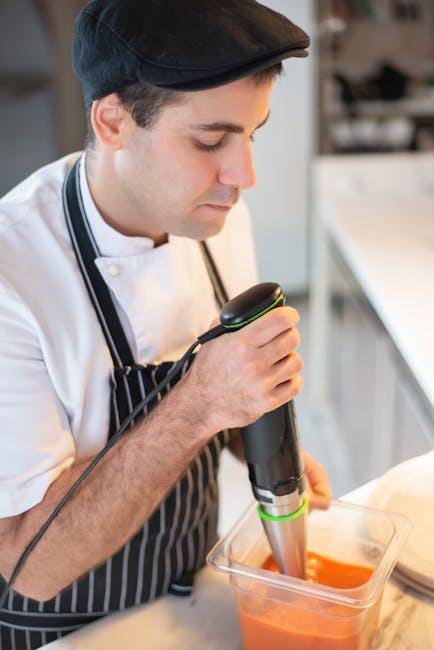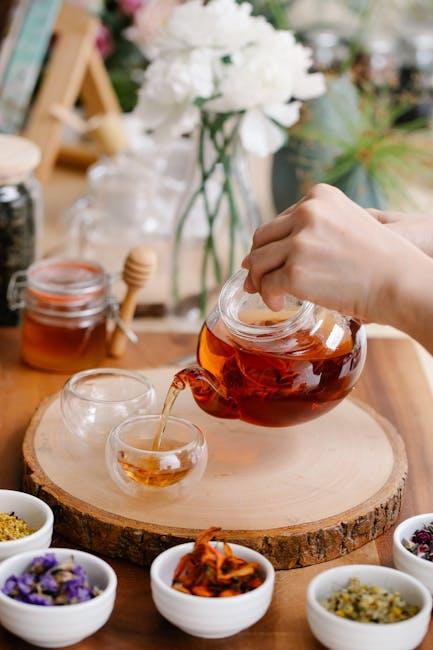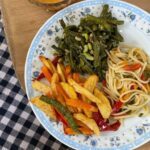There is a certain quiet magic that unfolds in a kitchen as a pot of soup simmers gently on the stove. Beyond its nourishing qualities, the act of preparing soup can serve as a soothing ritual, inviting a moment of mindfulness amid the rush of daily life. From chopping vegetables to stirring fragrant broth, each step offers a tactile and sensory experience that nurtures more than just the body. In this exploration, we delve into how the simple, rhythmic practice of making soup provides a calming sanctuary-transforming cooking from a routine task into a restorative pause.
The Meditative Rhythm of Chopping and Stirring

There’s a unique peace that arises from the repetitive motions involved in preparing soup. The chopping of vegetables, with its steady, rhythmic cadence, becomes almost hypnotic, drawing the mind away from daily chaos and into a focused present moment. Each slice is deliberate, measured, and offers a tactile connection to the food being created. This simple act reconnects us with the physical world, grounding anxious thoughts and fostering mindfulness.
Stirring the pot enhances this sense of calm, as the gentle circular motions invite a quiet meditation. Watching ingredients slowly merge and transform creates a visual harmony, soothing the senses beyond just the taste buds. The meditative rhythm produced by chopping and stirring can be broken down as:
- Chopping: Engages focus, sharpens attention
- Stirring: Promotes relaxation, rhythmic pacing
- Simmering: Encourages patience, anticipation
Aromatic Ingredients and Their Soothing Qualities

In the gentle simmer of a soup pot, the aromatic ingredients release their essence, wrapping the kitchen in a cocoon of comfort. Herbs like rosemary, thyme, and bay leaves infuse the broth with subtle, earthy notes known for their calming properties. Their fragrance has been cherished for centuries, not only for flavor but also for its ability to soothe the senses and ease the mind. The tender dance of garlic and onion adds depth, their warmth evoking a sense of home and security that quietly unravels tension with every stir.
Beyond herbs and alliums, spices like cinnamon, star anise, and cloves can elevate a simple soup into a calming ritual. The natural oils released create a fragrant symphony that promotes relaxation and mental clarity. Here is a quick guide to some :
| Ingredient | Soothing Quality | Best Used In |
|---|---|---|
| Rosemary | Improves mood, reduces stress | Vegetable and chicken soups |
| Bay Leaf | Calms digestion, reduces inflammation | Hearty stews and broths |
| Cinnamon | Warms the body, promotes relaxation | Squash and sweet potato soups |
| Garlic | Boosts immunity, soothes respiratory system | Homemade chicken noodle soups |
Creating a Sensory Sanctuary in Your Kitchen

Transforming your kitchen into a haven of tranquility begins with embracing the sensory magic that soup preparation offers. The gentle simmering of ingredients releases a warm, comforting aroma that fills the air, soothing the mind and inviting relaxation. As you chop vibrant vegetables and stir rich broths, you engage multiple senses-sight, smell, touch, and even sound-creating a mindful experience that can melt away daily stress. This ritual not only nurtures the body through wholesome nourishment but also calms the spirit, grounding you in the present moment.
To enhance this sensory journey, consider incorporating these elements into your kitchen sanctuary:
- Natural textures: Wooden utensils and cutting boards to add warmth and tactile pleasure.
- Soft lighting: Gentle, adjustable lighting to create a cozy ambiance.
- Quiet sounds: The rhythmic chopping of ingredients or gentle bubbling of soup on the stove.
- Fragrant herbs: Fresh bay leaves, thyme, or rosemary elevate the olfactory experience.
| Sensory Element | Effect |
|---|---|
| Aromatic herbs | Calming and invigorating scent |
| Warm lighting | Creates cozy atmosphere |
| Wooden tools | Comforting tactile sensation |
| Bubbling broth | Slow, soothing sound |
Mindful Cooking Practices to Enhance Emotional Wellbeing

Engaging in the gentle rhythm of soup preparation invites a quiet connection to the present moment, fostering a sense of calm and clarity. From slicing vibrant vegetables to stirring simmering broth, each step encourages mindful attention that can diffuse stress and nurture emotional balance. The sensory experience of feeling textures, smelling fresh herbs, and watching colors meld offers a therapeutic escape, making the act of cooking not just about nourishment but also emotional restoration.
Incorporating mindful cooking into your routine can be simple and rewarding. Focus on:
- Choice of ingredients – select fresh, wholesome components that bring you joy.
- Deliberate movements – chop, stir, and season with intention.
- Mindful breathing – coordinate slow breaths with your actions to enhance relaxation.
- Savoring the process – appreciate each stage without rushing towards the outcome.
| Practice | Emotional Benefit |
|---|---|
| Focused chopping | Reduces anxiety |
| Slow stirring | Enhances calm |
| Herb inhalation | Boosts mood |
| Mindful tasting | Increases gratitude |
In Retrospect
As the final spoonful warms not just the body but the spirit, the act of making soup reveals itself as more than a simple culinary task. It is a gentle ritual-a meditative dance of stirring, simmering, and savoring-that invites calm into the chaos of daily life. In the quiet moments of preparation, we find a soothing rhythm, a space where both ingredients and thoughts can slowly blend and settle. So next time you reach for a ladle, remember: in the humble art of soup-making lies a quiet remedy for the mind, a simmering source of calm that nourishes far beyond the bowl.














